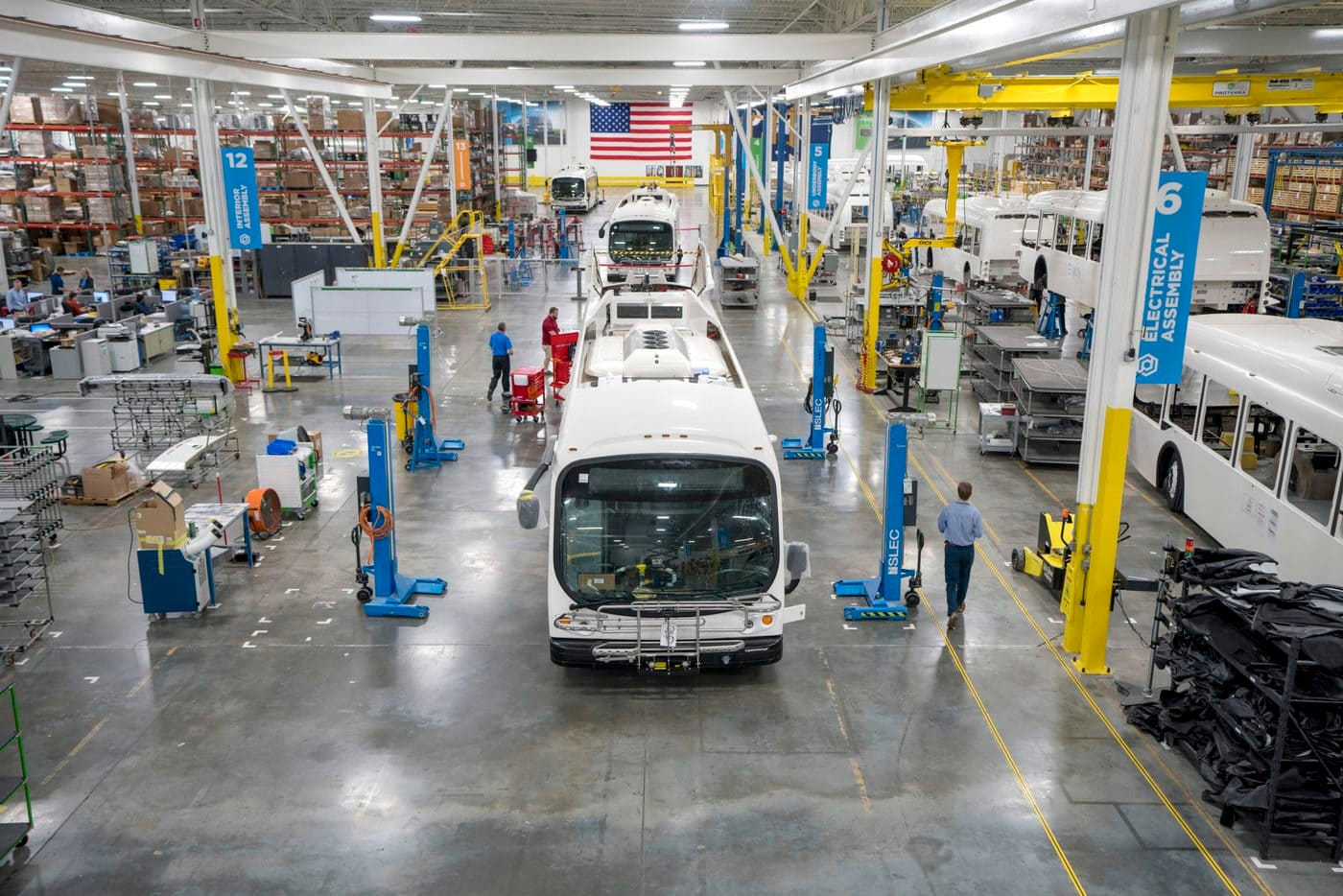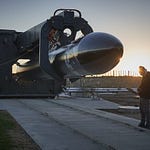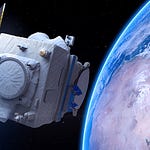⚡This is Equity Breakdown, where you will find short, no bullshit overviews of public companies! Join me in breaking down industries and companies that will become leaders embracing disruptive technologies and innovating change! Subscribe Now!
“The true currency of life is time…and we have all got a limited stock!” - Robert Harris
To all the Time Investors,
Vertical integration across the EV supply chain will define the winners of the industry. Today, we will breakdown, Proterra ($ACTC - $PTRA). The company is planning to become public through a reverse merger (SPAC) with ArcLight Clean Transition Corp ($ACTC).
🔴Download Equity Breakdown Report
📖What is Proterra?
Proterra is electrifying the commercial vehicle space through the three symbiotic business lines that ultimately create their ecosystem:
Proterra Powered: In this business segment the focus is to design, manufacture, integrate, and sell top-tier battery systems and electrification solutions such as drive-trains, and controls for their vehicles and OEM (Original Equipment Manufacturers) customers.
Proterra Transit: the focus is to design, manufacture, and sell electric buses for public and commercial fleets.
Proterra Energy: the focus is to provide “high-power” charging solutions and software services to support the company’s platforms. Specifically, the company has built the end-to-end infrastructure to optimize energy costs and ensure vehicle-to-grid functionality.
Proterra is the “Tesla” of the commercial vehicle space by harnessing the power of the electrification supply chain.
📈Market Opportunity
The electric vehicle revolution groundwork is established with the advancements in battery technologies, infrastructure, and government policies. Regarding the commercial vehicle space, the focus is on the total cost of ownership and achieving faster zero-emission target goals spearheaded by industry leaders and governments. According to the Environmental Protection Agency (EPA), the transportation sector represents about 28% of the GHG emissions in the U.S., and large size commercial vehicles account for 23% of those emissions. Based on the GHG emissions, Greenbiz revealed in their survey of global fleet companies that 60% of companies have GHG targets.
With 85% decline in battery costs, 40% cheaper operating costs than diesel vehicles, the electrification of buses and commercial vehicles will expand with reports from Frost & Sullivan highlighting 50% market penetration by 2025. As of 12/31/2020, there are 25,000 buses in operations that are targeted to achieve zero-emission by 2040. Governments, communities, and companies are all aligned in the demand for sustainable solutions.
As a result, Proterra believes they have an addressable market of $225 billion or 4.4 million commercial vehicles by 2023 and with an infrastructure opportunity of $37 billion charging investment or 40 TWh of annual energy need.
👨💻What are the Strategic Resources?
Proterra offers a technology platform that delivers a holistic portfolio of products and services across the electrification ecosystem.
Product Portfolio:
Battery System: designs, manufactures, and tests high-voltage battery packs used in their own portfolio of buses and other commercial uses with customers
Structure: Battery modules have best-in-class thermal and structure architecture, patented flexible battery management systems, and seamless software integration. This ensures multiple widths and heights, scalable lengths, stackable qualities, dynamic voltage options, and versatile designs to be applied across many different commercial vehicles. Battery cells are supplied by LG Chem with a contract that secures ~2 GWh through 2022
Economics: The fourth and fifth-generation battery systems delivered 20% cost reduction and increase in energy density resulting in greater scale performance. Next-generation will deliver 25% cost reduction and domestic supply of battery cells
Benefits: The battery systems minimize space requirements, extend range, ensure higher cargo/passenger capacity, have a long-life span, designed with ballistic-grade materials for any climate conditions or impact, and equipped with preventive diagnostic tools to ensure state-of-the-art reliable safe operations
Electric Drivetrains: designs and manufactures best-in-class drivetrains which impact vehicle performance. The drivetrain consumes the majority of the battery energy since it includes the traction motor, inverter, controller, and transmission
Structure: Multi-speed (2-speed) drivetrain that delivers 550 horsepower capability. The company is planning to develop 4-speed transmission in their new generation of drivetrains to meet any terrain conditions
Economics: Maintenance costs have been reduced since now EV drivetrains contain less than 20 parts versus 200 parts in traditional gas-fueled cars. Motor weighs less than a diesel engine and can be removed in 4 hours instead of 12 hours
Benefits: The drivetrain outperforms all direct-drive systems by delivering a longer range with 5x efficiency and 2x the acceleration of diesel buses
ZX5 Transit Bus: designs and manufactures their electric bus which launched in 2014. To date, there are 550 vehicles on the road today with 16 million cumulative miles.
Structure: the vehicles come with a variety of batteries sizes 225 kWh, 450 kWh, and 675 kWh with ~329 miles per charge
Economics: 75% less energy per mile than the average diesel bus
Benefits: Low operating costs, high uptime, long-range, greatest horsepower, fast acceleration, and zero tailpipe emission
Fleet-Scale Charging Solutions: designed charging solutions that deliver scalability, autonomous charge docking, and charge management. To date, the company has installed approximately 54 MW of charging infrastructure across more than 425 charge points throughout North America.
Structure: offers four charger capacities for small fleet solutions and 1.5 MW charger for fleet solutions. The system of fleet charges connects directly to medium-voltage power lines reducing costs and inefficiencies from transformers or switch gears
Economics: 50% fewer charges and optimizes charging time and energy costs
Benefits: the Proterra charge dispenser allows for multiple charge points (20-40 vehicles) at a time from one central power control system and enables vehicles to turn into utility grid assets when they are not on the road.
Apex Software: in-house software that optimizes fleet ownership and operations
Benefits: delivers real-time monitoring, diagnostics, analytics, fleet management, over-the-air updates, and smart charging. The software solutions reduce energy costs and maintenance costs giving the customer the lowest possible cost of ownership
Developing Resources:
Proterra holds 57 U.S. patents and had 28 U.S. patent applications pending which expire in 2029 and 2039. The company also holds 24 issued patents and 31 patent applications pending internationally.
The company’s battery research and development laboratory which opened in 2017 is in headquarters in Burlingame, California. The team delivers prototype assembly, environmental testing, life testing, electrical safety testing, and cell lifecycle testing. The max annual capacity in the factory is 345 MWh
The engineering team is composed of battery and charging system engineers that focus on the following technical areas: battery structure, thermal battery management systems, charging systems, high-voltage power distribution
The vehicle engineering team is in Greenville, South Carolina and includes technical expertise in body, pneumatics, mechanical systems, thermal systems, and drivetrains. The factory in South Carolina has a capacity of 400 vehicles and is about 210k square feet
The company has a bus and battery manufacturing facility in Los Angeles at 157k square feet. The bus factory has been operational since 2017 with 280 vehicle capacity. The battery manufacturing facility was completed in 2020 with 675 MWh capacity within 12 months under $20 million. The battery manufacturing facility is also a template to be scaled across the nation near distribution centers for customers
With the cash proceeds the company raises, it intends to reinvest about $300 million in research and development and $345 million in capital investments that further the advancement of their battery technologies, drivetrain platforms, and software services.
Customer Landscape + Partnerships:
Proterra is one of the few electric technology companies that has built and delivered their product portfolio to their customers. Their core relationships are highlighted across the three business lines:
Proterra Powered: Thomas Built Buses (subsidiary of Daimler Trucks North America LLC) – build 1 in 3 school buses in North America, Freightliner Custom Chassis, Van Hool, Komastsu, Optimal Electric Vehicles, and BusTech Pty Ltd. The products range from school buses, coach and double-decker transit buses, and construction and mining contracts
Proterra Transit: 133 customers nationwide which include municipal transit agencies, corporations, airports, and universities. Some prominent names are Foothill Transit – Los Angeles County, Transit agencies in Canadian provinces, University of Georgia, and Harvard
Proterra Energy: Edmonton Transit Services is a large customer that includes 33 charge points totaling about 4.3 MW to support 40 ZX5 Proterra Buses. Additional customers are L.A. Department of Transportation, and Chicago Transit Authority
Battery Partnership: Proterra has strong partnerships primarily with LG Chem and Panasonic as a reserve supplier for battery cells
Only 4 customers accounted for more than 10% of revenue and no customer surpasses 20% of revenue
Resource Deployment + Growth Strategies + Acquisitions:
The company intends to deploy its resources through the following business model and growth strategies:
Deployment Timeline:
The company intends to deploy resources utilizing their manufacturing capacity to produce more than 1 GWh of battery modules and 680 electric buses per year. Proterra has executed their strategy across 130+ communities in 43 states with 550+ vehicles in the road. Here are some milestones the company completed as they expanded:
In 2018: 135 vehicles delivered | 2019: 177 vehicles | 2020: 122 vehicles delivered
In 2018: Battery systems for 3 vehicles sets | 2019: battery systems for 20 vehicle sets | 2020: battery systems for 74 vehicle sets
The company has sold for 2020 a total of 1,000 buses
Business Model and Growth Strategies:
Proterra generates revenue through primarily the sale of electric buses, the sale of battery packs and powertrain systems, the sale and installation of charging systems and related equipment, and sale of spare parts.
*The company recognizes the sale of a vehicle once the customer has accepted it by conducting vehicle inspection and ensuring its operational.
Proterra executes using business development team and channel sales teams across markets. The company has also built strong relationships with public utilities, local governments, transit agencies, and federal government to increase education about their offerings. Based on this model the company is expected to deliver the following financial metrics:
2020E: Revenue: $193M | 2025E: Revenue: $2.6B – mainly driven by Proterra Powered & Energy | 68% CAGR
$750million in backlog and orders
2020E: GM: $8M (4%) | 2025E: GM: $642M (25%)
2020E: EBITDA: $-66M | 2025E: EBITDA: $539 (21%)
2020E: FCF: $-95M | 2025E: FCF: $390M
💪Key Strategic Moats
Scale: Charging solutions represent a large obstacle for commercial EV expansions. Proterra has integrated fleet charging solutions with their APEX software to deliver fleet modeling/planning, energy storage capability, and fast charging capabilities with up to 40 vehicles at a time. The company removes barriers for customer expansions in the EV space
Value Chain Innovation: Proterra utilizes their core three business lines to deliver a full package of solutions for their customers. The customer receives customized battery systems, drivetrain systems, charging infrastructure, and reliable and proven commercial vehicles (buses). Customers can be assisted through development and integration of the vehicles and the supporting components
Contracts with largest OEM customers in the space: Daimler is the world’s largest commercial vehicle manufacturer. The company has active programs with two subsidiaries, the market leader of school buses and the market leader of class 4 and class 6 last-mile delivery vans. Prototypes are already built with full production in 2021
Proven Ecosystem: Proterra is the first commercial electric vehicle company in North America with proven on-road experience of their 100% EV buses. They have delivered electric buses for over 10 years and integrated battery packs for more than seven years. The company has 16 million cumulative miles of actual performance in the market.
Specialized Team: The company has 614 employees with ~140 engineers featured on LinkedIn. The core engineering team has top industry human capital with battery engineering and charging systems experience
⚠️Key Critical Risks
Competition: The company faces competition from all three business lines:
Traditional diesel, hybrids legacy bus/truck companies such as NFI Group Inc, Gillig Corporation, Nova Bus Company are also entering into the EV space. Arrival and Rivian are also comparable EV companies with bus and van prototypes and large contracts with UPS and Amazon
The company also faces competitors in the battery technology space from Romeo Power and Akasoi, and electric powertrain alternatives from Cummins ($36B Market Cap)
From a charging infrastructure space companies such as ChargePoint, and Rhombus pose certain market share risks
Limited number of suppliers for critical components in the supply chain: Lithium-ion cells that are used to manufacture battery packs are dependent on LG Chem. Additionally, the sole source supplier for the bus body is TPI Composites, Inc
Transit Buses is heavily dependent on government funding: Transit customers are transit authorities that depend on government funds. 70% of the transit buses that ordered buses were recipients of grants through no emission vehicle programs
Revenue heavily dependent on a small set of customers: Southeastern Pennsylvania Transportation Authority, Regional Transportation Commission of Washoe County and District Department of Transportation accounted for 15%,12% and 12% of total revenue in 2018. In 2020, 50% of electric buses were delivered to Port Authority of New York and 40% of the buses delivered to City of Edmonton
🧬Team DNA and Vision
Key Leaders: Proterra’s team reflects strong professional backgrounds with industry leaders from Tesla, Apple, Honda, Bosch, GM, and Bloom Energy.
Jack Allen - Chairman and CEO: Previous leader at Navistar International Corporation, conglomerate trucking/bus company, with three decades of experience
Gareth T. Joyce - President of Proterra Powered and Energy: Previous leadership roles in Delta Air Lines, and Mercedes-Benz
Dustin Grace - Chief Technology Officer: Built the engineering team responsible for power systems development and energy storage. His focus is on battery technology, and he brings nine years of powertrain development expertise from Tesla
Joshua P. Ensign - Chief Operating Officer: Previous leadership as Vice President of Manufacturing at Tesla. He was responsible for ramping up Model S production, production launch of Model X, and building the seat manufacturing factory
Richard Huibregtse – Senior Vice President of Engineering: Previous leadership as SVP of Engineering at Edisun Microgrids, developer of distributed solar power solutions
Vision: Proterra’s mission is to advance electric vehicle technology to deliver the world’s best-performing commercial vehicles. The company has embedded innovation in their DNA with a heavy engineering team and technology across the value chain.
🤯Key Insights for Time Investors:
Market forces have reacted from the alignment of government, communities, companies, and technology.
States are targeting 100% zero-emission for last-mile-delivery and heavy-duty trucks by 2050
The world’s largest logistic companies (UPS, FEDEX, AMAZON) are transitioning their fleets to electric
85% decline in battery costs and 40% decline in operating costs versus diesel vehicles
Unlike passenger vehicles, commercial vehicle electrification poses different challenges such as high mileage, weight, and lifecycle requirements. Proterra has designed, manufactured, and proven the formula to accomplish this since 2014.
When it comes to electrification, the focus should be in the technological advancements that ultimately monopolize the value chain. Proterra not only builds their vehicles, but they also build their proprietary drivetrains, and more importantly the end-to-end charging infrastructure needed for scale.
Large R&D is being invested to domestically produce battery cells (similar to Tesla)
Best in class battery systems enables greater range and weight loads with lifespan of 4k cycles
Proterra has proven their products are successful with ~16M real-world miles, 450+ charge points, and 1000+ vehicle sales
Proterra is built with innovation at the foundation and is positioned to become the “Tesla” of the commercial space.
Investor Lineup:
Daimler Trucks + Tao Capital Partners
BMW i Ventures + Edison Energy + Constellation + Kleiner Perkins Caufield & Byer + Federal Transportation Administration
Chamath Palihapitiya – Social Capital (PIPE Investor)
Post SPAC Merger with ACTC, ~68% ownership will remain with existing Proterra shareholders
-Igli G. Laçi
If you like the content please make sure to share this newsletter, share this post, follow me on Twitter, and/or subscribe (if you have not already)!
Additional resources and sources I used for all the Time Investors (Leeeetttsss Gooooooo!!!)
Disclaimer: The companies mentioned in my newsletter are not investment advice. This is simply information researched to help you learn about industries and various public companies















Proterra ($ACTC - $PTRA) Breakdown